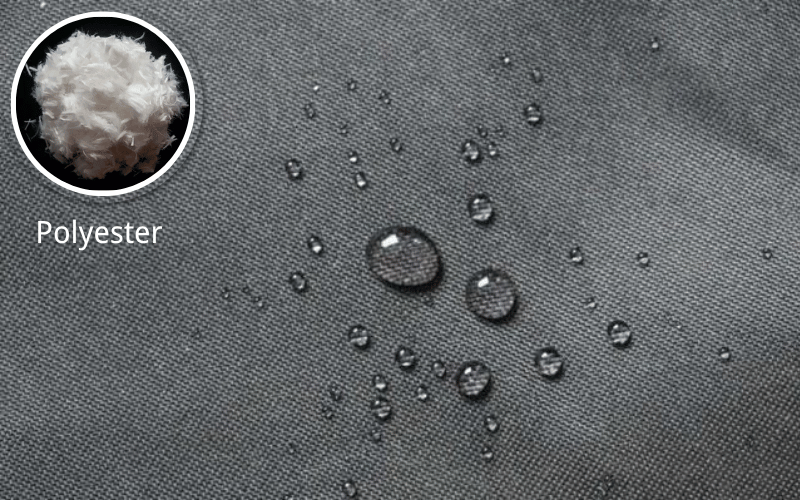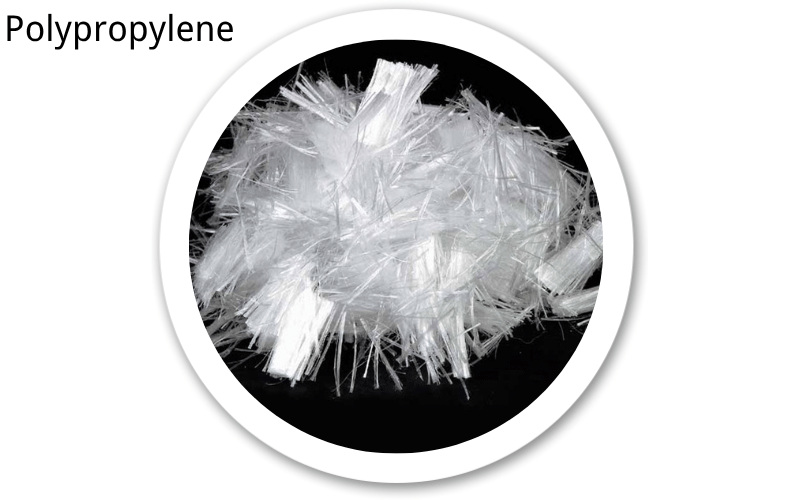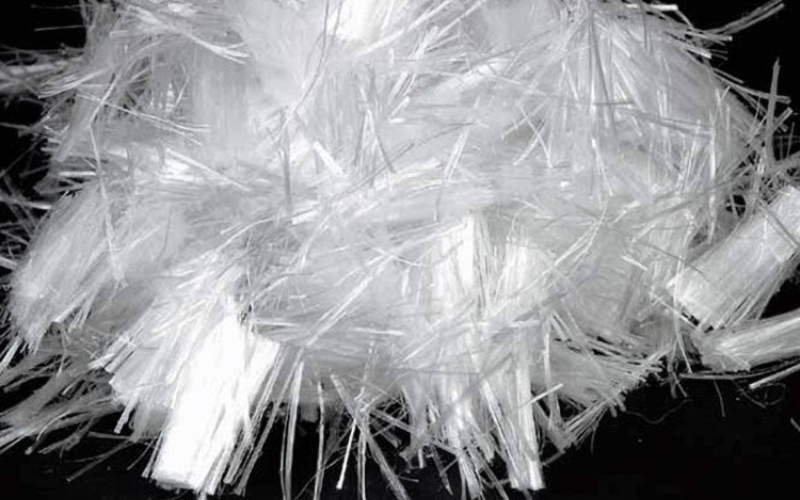Fabrics play a vital role in various industries, offering unique properties and applications based on their composition. Among the most commonly used materials are polyester, polypropylene, and nylon, each known for its distinct characteristics and versatility. Understanding these fabrics helps in selecting the right material for specific needs, whether in manufacturing, apparel, or industrial applications. This section provides an in-depth examination of these three fabrics, highlighting their key features and typical applications.
Table of Contents
ToggleWhat is Polyester?
Polyester is a synthetic fabric widely recognized for its durability and resistance to wear and tear. It is made from polymer fibers, typically derived from petroleum-based products. Key features of polyester include:
- Strength and Resilience: Polyester is resistant to stretching, shrinking, and wrinkling, making it ideal for long-lasting applications.
- Moisture Resistance: It repels water, dries quickly, and resists mildew, making it suitable for outdoor and activewear.
- Versatility: Polyester is used in textiles, upholstery, and industrial products due to its adaptability and ease of blending with other fibers.

What is Polypropylene?
Polypropylene is a lightweight, thermoplastic polymer fabric known for its excellent chemical resistance and low moisture absorption. Its properties include:
- Durability: Polypropylene is resistant to abrasion, chemicals, and UV exposure, making it ideal for industrial and outdoor applications.
- Lightweight: Its low density makes it one of the lightest synthetic fabrics, often used in packaging and filtration systems.
- Non-Woven Applications: Commonly used in non-woven fabrics, polypropylene is a key material in medical textiles, such as masks and gowns.

What is Nylon?
Nylon is a synthetic polymer fabric prized for its strength, elasticity, and smooth texture. Originally developed as a silk substitute, it has become a staple in various industries. Key characteristics include:
- High Tensile Strength: Nylon is robust, making it suitable for heavy-duty applications like ropes, nets, and industrial belts.
- Elasticity: Its stretchability and recovery make it a popular choice for activewear and hosiery.
- Resistance to Wear: Nylon resists abrasion, chemicals, and heat, ensuring durability in demanding environments.

By understanding the unique properties of polyester, polypropylene, and nylon, industries and consumers can make informed decisions when selecting fabrics for specific applications, balancing performance, durability, and cost-effectiveness.
Understanding the Differences
Polyester, polypropylene, and nylon are three widely used synthetic fabrics, each offering unique properties that make them suitable for various applications. While they share similarities as durable and versatile materials, their differences in composition, performance, and functionality set them apart. This section examines the differences between these fabrics, clarifying their unique advantages and ideal applications.
Differences Between Polyester and Polypropylene
Polyester and polypropylene differ significantly in their properties and applications:
- Moisture Resistance: Polypropylene is highly hydrophobic, meaning it repels water completely, making it ideal for moisture-sensitive applications like filtration and outdoor gear. Polyester, while moisture-resistant, can absorb small amounts of water and dry quickly.
- Durability: Polyester is more resistant to wear and tear, making it suitable for long-term use in textiles and upholstery. Polypropylene, while durable, is less resistant to abrasion and may degrade faster under heavy use.
- Temperature Tolerance: Polyester can withstand higher temperatures, making it better for applications involving heat, such as industrial fabrics. Polypropylene has a lower melting point and is more suited for lightweight, disposable products.
Differences Between Polyester and Nylon
Polyester and nylon are often compared due to their strength and versatility, but they have distinct differences:
- Strength and Elasticity: Nylon is stronger and more elastic than polyester, making it an ideal material for heavy-duty applications such as ropes and activewear. Polyester, while durable, is less stretchy and better suited for applications requiring dimensional stability.
- Moisture Absorption: Nylon absorbs more water than polyester, which can lead to longer drying times. Polyester’s quick-drying nature makes it a preferred choice for outdoor and sportswear.
- Texture and Feel: Nylon has a smoother and softer texture, often used in hosiery and intimate apparel, while polyester has a slightly rougher feel, commonly used in upholstery and industrial fabrics.
Differences Between Polypropylene and Nylon
Polypropylene and nylon differ in their chemical composition and performance characteristics:
- Weight: Polypropylene is significantly lighter than nylon, making it ideal for applications where weight is a concern, such as packaging and non-woven fabrics. Nylon, being denser, is better suited for heavy-duty uses.
- Chemical Resistance: Polypropylene exhibits greater resistance to chemicals and solvents, making it suitable for use in industrial and medical applications. Nylon, while durable, is less resistant to certain chemicals.
- Heat Resistance: Nylon can tolerate higher temperatures compared to polypropylene, making it more suitable for applications involving heat or friction.
By understanding these differences, industries and consumers can make informed decisions when selecting the most suitable fabric for their specific needs, balancing factors such as durability, moisture resistance, and application requirements.
Durability and Performance
The durability and performance of synthetic fabrics like polyester, polypropylene, and nylon are key factors that determine their suitability for various applications. Each material offers unique strengths and characteristics, making them ideal for specific uses. This section examines the durability of these fabrics, highlighting their resistance to wear, environmental factors, and overall performance in demanding conditions.
Durability of Polyester
Polyester is renowned for its resilience and ability to withstand wear and tear over time. Key aspects of its durability include:
- Abrasion Resistance: Polyester resists friction and surface damage, making it ideal for upholstery, outdoor gear, and industrial applications.
- UV Resistance: It performs well under prolonged exposure to sunlight, maintaining its strength and color, which is why it is commonly used in outdoor textiles.
- Moisture Resistance: While not completely hydrophobic, polyester resists water absorption and dries quickly, reducing the risk of mold or mildew.
- Temperature Tolerance: Polyester can endure moderate heat, making it suitable for applications involving occasional exposure to higher temperatures.
Durability of Polypropylene
Polypropylene is valued for its lightweight nature and chemical resistance, but its durability has specific limitations:
- Chemical Resistance: It is highly resistant to acids, bases, and solvents, making it ideal for industrial and medical applications.
- Moisture Resistance: Being hydrophobic, polypropylene repels water completely, preventing moisture-related degradation.
- Abrasion and UV Sensitivity: While durable in many respects, polypropylene is less resistant to abrasion and prolonged UV exposure, which can lead to faster wear in outdoor environments.
- Low Melting Point: Its lower heat tolerance limits its use in high-temperature applications.
Durability of Nylon
Nylon is widely recognized for its exceptional strength and elasticity, making it one of the most durable synthetic fabrics:
- High Tensile Strength: Nylon can withstand significant stress and heavy loads, making it ideal for ropes, industrial belts, and heavy-duty fabrics.
- Abrasion Resistance: It resists surface damage and wear, ensuring longevity in demanding applications.
- Moisture Absorption: While nylon absorbs more water than polyester or polypropylene, it remains resistant to mold and mildew.
- Heat and Chemical Resistance: Nylon withstands higher temperatures and moderate chemical exposure, making it a versatile material for various industrial and consumer applications.
By understanding the durability and performance characteristics of polyester, polypropylene, and nylon, users can select the most suitable material for their specific needs, balancing factors such as strength, environmental resistance, and application requirements.
Pros and Cons of Each Fabric
Polyester, polypropylene, and nylon are widely used synthetic materials, each offering unique advantages and limitations. Understanding the strengths and weaknesses of these fabrics helps in selecting the most suitable option for specific applications. This section provides a detailed comparison of the benefits and drawbacks of each material, highlighting their performance in various conditions.
Pros and Cons of Polyester
Pros:
- Durability: Polyester is resistant to stretching, shrinking, and wrinkling, making it ideal for long-term use.
- Moisture Resistance: It dries quickly and resists mildew, making it suitable for outdoor and activewear.
- UV Resistance: Polyester retains its color and strength even under prolonged exposure to sunlight.
- Versatility: It blends well with other fibers and is used in a wide range of applications, from textiles to industrial products.
Cons:
- Moisture Absorption: While resistant, it can absorb small amounts of water, which may not be ideal for completely waterproof applications.
- Texture: Polyester can feel less soft compared to natural fibers or nylon.
- Environmental Impact: As a petroleum-based product, its production and disposal raise sustainability concerns.
Pros and Cons of Polypropylene
Pros:
- Lightweight: Polypropylene is one of the lightest synthetic fabrics, making it ideal for applications where weight is a concern.
- Waterproof: Its hydrophobic nature ensures complete water resistance, preventing moisture-related issues.
- Chemical Resistance: It withstands exposure to acids, bases, and solvents, making it suitable for use in both industrial and medical applications.
- Cost-Effective: Polypropylene is generally more affordable than other synthetic materials.
Cons:
- UV Sensitivity: Prolonged exposure to sunlight can cause degradation of its strength and color.
- Abrasion Resistance: It is less resistant to wear and tear compared to polyester or nylon.
- Heat Tolerance: Its low melting point limits its use in high-temperature environments.
Pros and Cons of Nylon
Pros:
- Strength and Elasticity: Nylon is robust and stretchable, making it ideal for heavy-duty applications.
- Abrasion Resistance: It withstands surface damage, ensuring long-lasting performance.
- Smooth Texture: Nylon has a soft, silky feel, making it popular for apparel and intimate wear.
- Heat Resistance: It tolerates higher temperatures compared to polypropylene.
Cons:
- Moisture Absorption: Nylon absorbs more water than polyester or polypropylene, leading to longer drying times.
- Cost: Nylon is often more expensive than other synthetic fabrics.
- Chemical Sensitivity: It is less resistant to certain chemicals compared to polypropylene.
By weighing the pros and cons of polyester, polypropylene, and nylon, users can make informed decisions based on their specific needs, balancing factors such as durability, cost, and environmental considerations.
Best Suited Applications
Polyester, polypropylene, and nylon are versatile synthetic materials that excel in specific applications due to their unique properties. From industrial uses to consumer products, these fabrics are chosen based on their durability, resistance, and performance under various conditions. This section explores the most suitable applications for each material, highlighting their strengths in different industries and environments.
Best Suited Uses for Polyester
Polyester is widely used across industries due to its durability and adaptability. Common applications include:
- Textiles and Apparel: Polyester is a popular choice for clothing, activewear, and outerwear due to its wrinkle resistance, quick-drying nature, and ability to retain color.
- Home Furnishings: It is frequently used in upholstery, curtains, and bedding for its strength and resistance to fading.
- Industrial Fabrics: Polyester is ideal for conveyor belts, ropes, and tarps due to its exceptional abrasion resistance and moderate heat tolerance.
- Outdoor Gear: Its UV resistance makes it suitable for tents, backpacks, and other outdoor equipment.
Best Suited Uses for Polypropylene
Polypropylene’s lightweight and water-resistant properties make it ideal for specific applications, such as:
- Medical Textiles: It is commonly used in disposable masks, gowns, and surgical drapes due to its chemical resistance and non-woven structure.
- Packaging: Polypropylene is a preferred material for bags, containers, and food packaging because of its low weight and moisture resistance.
- Filtration Systems: Its hydrophobic nature makes it effective in air and liquid filtration applications.
- Outdoor Products: Although less UV-resistant, it is used in items such as garden furniture and storage solutions due to its affordability and durability.
Best Suited Uses for Nylon
Nylon’s strength and elasticity make it a go-to material for demanding applications, including:
- Heavy-Duty Fabrics: These fabrics are used in industrial belts, ropes, and nets due to their high tensile strength and abrasion resistance.
- Sports and Activewear: Nylon’s stretchability and smooth texture make it ideal for swimwear, leggings, and other performance apparel.
- Automotive Components: It is used in parts such as airbags and seatbelts for its durability and heat resistance.
- Outdoor Equipment: Nylon is a preferred material for tents, parachutes, and backpacks due to its lightweight and weather-resistant properties.
By understanding the best-suited applications for polyester, polypropylene, and nylon, industries and consumers can select the most appropriate material for their specific needs, ensuring optimal performance and longevity.
Frequently Asked Questions
Q: What is the main difference between polypropylene and polyester?
A: Polypropylene is a synthetic polymer known for its exceptional durability, lightweight nature, and resistance to wear. Polyester, also a synthetic fiber, is valued for its versatility, softness, and aesthetic appeal. While polypropylene is often chosen for high-traffic or outdoor applications due to its strength and moisture resistance, polyester is preferred for its comfort and visual qualities in indoor settings.
Q: Are polypropylene rugs better than polyester rugs?
A: Polypropylene rugs are ideal for outdoor use and high-traffic areas because of their durability, stain resistance, and ability to withstand UV exposure. They are easy to clean and maintain, making them a practical choice for demanding environments. Polyester rugs, while softer and more comfortable, may show wear more quickly in high-traffic areas, making them better suited for low-traffic or decorative purposes.
Q: How do polypropylene and polyester compare in terms of UV resistance?
A: Polypropylene offers excellent UV resistance, making it highly suitable for prolonged outdoor use without significant fading or degradation. Polyester also provides UV resistance but may not perform as effectively as polypropylene in harsh sunlight. For outdoor applications with high sun exposure, polypropylene is often the preferred material.
Q: Which material is more durable: polypropylene or polyester?
A: Polypropylene is highly durable and resistant to heavy foot traffic, making it a robust choice for rugs and carpets in high-traffic areas. Polyester, while durable in its own right, is softer and may show signs of wear more quickly under similar conditions. For areas with heavy use, polypropylene is generally the better option.
Q: Can polypropylene rugs absorb spills like polyester?
A: Polypropylene rugs are designed to repel moisture and resist spills, allowing them to dry quickly without absorbing liquids. Polyester, while capable of wicking moisture to some extent, is more absorbent than polypropylene. For ease of cleaning and stain resistance, polypropylene rugs are typically the superior choice.
Q: What factors should I consider when choosing between polyester and polypropylene?
A: When deciding between polyester and polypropylene, consider factors such as durability, UV resistance, ease of cleaning, and intended use. Polypropylene is better suited for high-traffic or outdoor areas due to its strength and resistance to moisture. Polyester, on the other hand, is ideal for applications where softness and aesthetic appeal are priorities.
Q: Are polyester rugs more expensive than polypropylene rugs?
A: Polyester rugs are generally more expensive than polypropylene rugs due to their softer texture and enhanced visual appeal. However, pricing can vary based on quality, brand, and design. It’s essential to weigh the long-term benefits, durability, and specific needs of your space when comparing costs.
Q: What are the advantages of using polyester webbing over polypropylene?
A: Polyester webbing is favored for its superior strength, abrasion resistance, and durability, making it an ideal choice for heavy-duty applications such as outdoor gear, straps, and backpacks. While polypropylene is lighter and more cost-effective, polyester’s enhanced UV resistance and ability to withstand wear make it a better choice for demanding environments.
The Bottom Line
Each of these synthetic fabrics has its place in modern manufacturing and the production of consumer goods. Polyester offers a balanced mix of durability and affordability, while polypropylene excels in moisture resistance and lightweight applications. Nylon remains the go-to material for high-strength, flexible textiles.
Choosing the right material depends on your specific needs—whether it’s longevity, water resistance, or elasticity. By understanding their differences, manufacturers, designers, and consumers can make informed decisions that optimize performance and cost.
For specialized applications, blended fabrics (e.g., polyester-nylon mixes) often deliver the best of both worlds, combining strength, flexibility, and weather resistance.
References:
- Textile engineering studies on synthetic fiber properties
- Industry applications in medical and performance textiles
- Comparative durability tests in outdoor and industrial environments


